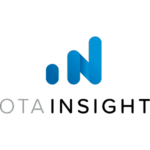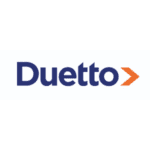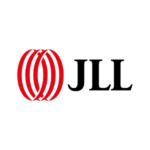 Covid-19 has changed the face of business as we know it. Conference room meetings have adapted to online video call formats, and advanced cloud computing has facilitated the work of remote teams. For companies across the board, innovation is now the order of the day. This new way of doing things has impacted eLearning, as well. Now more than ever, companies are committed to finding solutions for employee skills training that are quick, effective and hassle-free. Enter Rapid eLearning.
Covid-19 has changed the face of business as we know it. Conference room meetings have adapted to online video call formats, and advanced cloud computing has facilitated the work of remote teams. For companies across the board, innovation is now the order of the day. This new way of doing things has impacted eLearning, as well. Now more than ever, companies are committed to finding solutions for employee skills training that are quick, effective and hassle-free. Enter Rapid eLearning.
According to a recent study, the global eLearning market is expected to grow to $325 billion by 2025. In this context, the question that comes to mind is:
What is rapid eLearning and how is it different?
In a nutshell: Rapid eLearning is a process of designing and developing eLearning courses in a span of a few weeks as opposed to traditional eLearning courses, which can take several months to compile. Rapid eLearning does away with complex ornamental designs, thereby saving costs. Instead, it uses strong instructional techniques to create courses that follow new-age learning that is game-based and focused on storytelling.
There’s a sea of information about rapid eLearning on the internet. Some sources argue that the quick turnaround of content compromises the quality. Others criticise rapid eLearning for not following instructional design principles. Most agree that training increases revenue for business growth.
Since rapid eLearning has inevitably infiltrated the world of corporate training, let’s explore some of the basics of rapid eLearning for employees.

First off, let’s start by dispelling some myths about rapid eLearning.
Myth 1: It compromises on content quality
Traditionally, we’re geared towards the belief that if a work is completed quickly, it must be lacking in quality. In rapid eLearning, the roles of subject matter experts (SMEs) and instructional designers (ID) are different from conventional eLearning programs. This is because rapid eLearning utilises authoring tools to edit and update existing content.
SMEs don’t need to draft content from scratch. However, existing content is often out of date, and SMEs need to review and restructure these to be fit for purpose. So, their expertise is still leveraged but in a different way. Similarly, instructional designers need to devise an ID strategy. They have to define learning objectives, review existing content, and design end-of-training assessments. Teams usually join a meeting to discuss intended updates and define the way forward.
So, content is being reviewed at every stage, dispelling the myth that rapid eLearning compromises quality.
Myth 2: It reduces creativity
Another common myth associated with rapid eLearning is that it leaves no room for creativity, with mostly click-next learning models. This couldn’t be further from the truth. The look and feel of your rapid eLearning content depends on the instructional design strategies adopted by the ID team. Sophisticated authoring tools have templates that can be used to create immersive learning material with graphics and simulations. So, that’s another rapid eLearning myth busted!
Myth 3: It doesn’t require project management
A widespread misconception about rapid eLearning is that it does away with project management. A robust and dynamic eLearning process requires regular checks and updates, so it’s necessary to have an efficient project management system in place. This ensures that any feedback from SMEs and IDs is promptly incorporated into the training content framework. This saves both time and money spent on reworks later and improves workplace productivity.

Now that we’ve busted some of the common myths about rapid eLearning, let’s take a look at some of its pros instead.
Pro 1: It leverages authoring tools
Rapid eLearning leverages and optimizes the use of authoring tools. These tools, with their built-in suite of features like graphics, preset templates, stock images, and interactivities, allow you to design sophisticated content folios without expert technical know-how. Popular authoring tools like iSpring, Storyline 360, and Adobe Captivate are easy to use and allow you to publish content to HTML 5. Want to know the best part? You can do this in-house without calling your vendor!
Pro 2: It takes less time and cost to develop
One of the first things that sets rapid eLearning apart from conventional eLearning processes is the lower rollout time. With authoring tools, it’s easy to update and refresh existing content instead of creating it from scratch, saving time and money. However, it’s important to understand that the more complex you want your rapid eLearning material content to be, the more time and resources it will need.
Rapid eLearning is particularly useful for content with low shelf-lives or one that is constantly changing. Example: training for troubleshooting VoIP would especially benefit from a rapid eLearning module.
How to implement rapid eLearning
A successful rapid eLearning process depends on the proper implementation of the 4 Rs:
- Record
- Republish
- Rebuild
- Redesign
Record
This first step helps minimise SME touch points during the design process, helping to deliver the project on time.
- First, the SME collects all relevant content and puts it in a PowerPoint deck. They then add any explanatory notes, using their mobile phones, before sending them to the ID team.
- Second, the IDs use the SME feedback and additional notes to improve the design and complete editing by incorporating any audio into the script.
- This is sent back to the SME for final review and approval.
- Once they sign off on the finished PPT, the development team generates the final rapid eLearning module with all the graphics and audio.
Republish
Content that was designed using an older version of an authoring tool can be republished for mobile compatibility on an updated version of the same tool. This is also a good time to check for updates and incorporate them as required.
Rebuild
Your existing content might be too long for your employees. With decreasing attention spans, it’s important to have concise content. You need something that can easily fit into an employee’s daily schedule. Rapid eLearning can convert long-form content into microlearning capsules. This makes it easier to achieve a learning objective, particularly in a remote team.
Redesign
Convert conventional classroom training to dynamic eLearning with rapid eLearning’s redesign step. With the right ebook creator tool, you can convert any type of content — from synchronous, which involves instructor-led learning, to asynchronous, which includes microlearning and eLearning.

To sum up, rapid eLearning is the present and future of online learning programs. Whether it’s CCaas training or guidelines on implementing a security system, rapid eLearning gets the job done quicker, cheaper, and more effectively.
About the author
 Jessica Day is the Senior Director for Marketing Strategy at Dialpad, a modern business communications platform that takes every kind of conversation to the next level—turning conversations into opportunities. Jessica is an expert in collaborating with multifunctional teams to execute and optimize marketing efforts, for both company and client campaigns. Here is her LinkedIn.
Jessica Day is the Senior Director for Marketing Strategy at Dialpad, a modern business communications platform that takes every kind of conversation to the next level—turning conversations into opportunities. Jessica is an expert in collaborating with multifunctional teams to execute and optimize marketing efforts, for both company and client campaigns. Here is her LinkedIn.




























